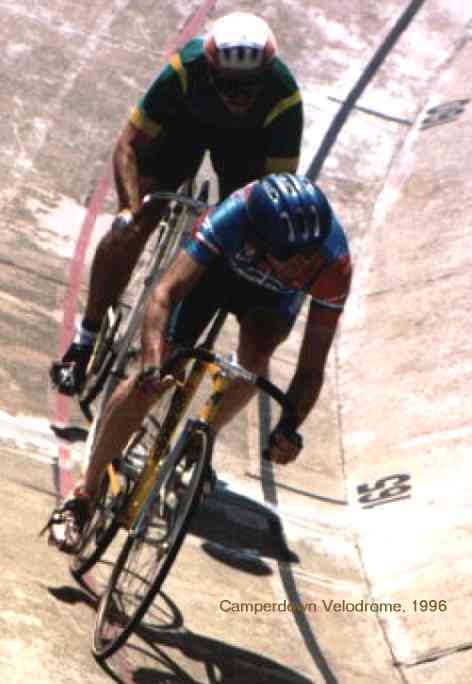Sounds like a cool study. The authors examined "patterns of leg muscle recruitment and co-activation, and the relationship between muscle recruitment and cadence, in highly trained cyclists". They tested at "individual preferred cadence, 57.5, 77.5 and 92.5 revs min" using (one
hopes) carefully placed electrodes. Sounds cool as well. And the findings? Well the authors say that "muscle recruitment patterns varied from those previously reported, but there was little variation in muscle recruitment between these highly trained cyclists". Specifically the "tibialis posterior, peroneus longus and soleus were recruited in a single, short burst of activity during the downstroke" and that "the tibialis anterior and gastrocnemius lateralis were recruited in a biphasic and alternating manner". They found that "contrary to existing hypotheses, our results indicate little co-activation between the tibialis posterior and peroneus longus".
So far so good. Muscle recruitment is important from many angles, not simply as an academic pursuit but as an aid to understanding how it is we can generate the power that we do and applying that understanding in coaching athletes in optimal patterns of training. Such understanding would also help avoid injury as well as assist in faster healing after injury.
Anyway, the authors found that "peak EMG amplitude increased linearly with cadence and did not decrease at individual preferred cadence. There was little variation in patterns of muscle recruitment or co-activation with changes in cadence". I take this to mean that most elite cyclists use the same muscles and that varying cadence does not significantly change the pattern of recruitment. In other words you are still using the same muscles, irrespective of the tested cadences.
Reference: Leg muscle recruitment in highly trained cyclists.
Authors: Chapman, Vicenzino, Blanch, Knox and Hodges from the Division of Physiotherapy, The University of Queensland, Brisbane, QLD, Australia and the Department of Physical Therapies, Australian Institute of Sport, Bruce, ACT, Australia.
Source: Journal of Sports Sciences; Feb2006, Vol. 24 Issue 2, p115-124
My view: For me this means that Lance Armstrong spinning at 110 revs/minute is probably using the same muscles as Jan Ullrich at 90 revs/minute. It's important to pin that down. Higher cadences do not necessarily mean a different arrangement of muscles doing the work.
Beyond that important point, there are neuromuscular factors involved as well as the lower per-rev power output at higher revs, so a comparison and conclusion Lance vs Jan isn't going to happen here. However I think it's interesting to note that seating position could affect the outcome. To me Jan looks cramped on the bike. Highly effective but a little less comfy than Lance. Perhaps (this is me postulating, not the authors above!) position will be a defining factor and possibly cadence is less important to the ultimate outcome than we have imagined. Any professional opinions on this out there?








